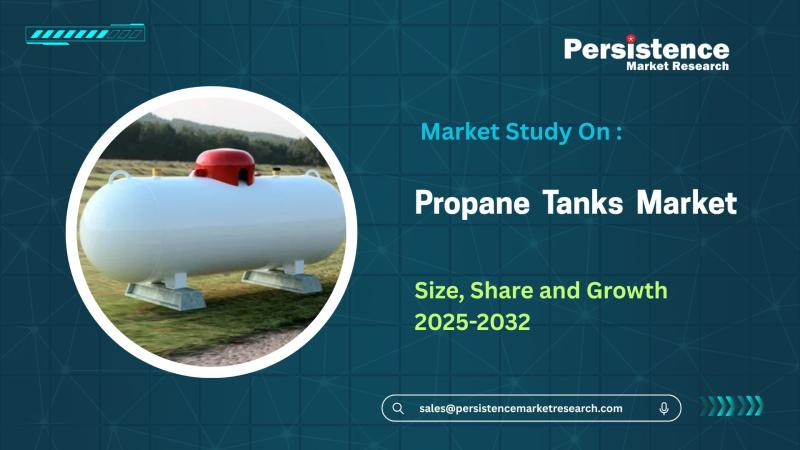Press release
3D Printing Photopolymers Market: Shaping the Future of Additive Manufacturing
IntroductionThe 3D printing industry has made significant strides in recent years, with photopolymers emerging as one of the most essential materials in additive manufacturing. Photopolymers, or light-sensitive resins, are materials that harden when exposed to ultraviolet (UV) light, making them ideal for use in various 3D printing applications. The 3D printing photopolymers market is expanding rapidly, driven by technological advancements, a wide range of applications, and an increasing demand for customized, complex parts. This article explores the market dynamics, key trends, growth drivers, and future prospects of the 3D printing photopolymers market, which is poised to transform industries from healthcare to automotive.
Market Overview
The 3D printing photopolymers market has witnessed significant growth over the past decade. Photopolymers are used in a wide variety of 3D printing processes, particularly in resin-based printers such as stereolithography (SLA), digital light processing (DLP), and mask image projection (MIP). These resins provide high precision and detail, making them suitable for applications requiring complex geometries and intricate designs. The global 3D printing photopolymers market is forecast to expand at a CAGR of 16.9% and thereby increase from a value of US$ 0.9 Bn in 2024, to US$ 2.8 Bn by the end of 2031.
The versatility of photopolymers, including the ability to print with a range of materials from standard plastics to flexible and durable resins, has made them indispensable in various sectors. Their demand is particularly high in industries such as healthcare, automotive, aerospace, and consumer goods.
Get a Sample PDF Brochure of the Report (Use Corporate Email ID for a Quick Response): https://www.persistencemarketresearch.com/samples/34515
Key Drivers of Market Growth
• Advancements in 3D Printing Technology: As 3D printing technology continues to evolve, new and improved photopolymers are being developed to meet the growing demands of industries. Innovations in material science are leading to the creation of photopolymers with enhanced properties, including increased durability, flexibility, and heat resistance. These advancements are enabling manufacturers to produce a wider range of products with higher precision.
• Customization and Complexity of Designs: 3D printing is known for its ability to create customized and complex designs that are difficult or impossible to achieve with traditional manufacturing methods. Photopolymers are particularly suitable for applications where intricate details and precision are required, such as in medical devices, dental implants, and aerospace components. This ability to produce highly customized products is driving the adoption of photopolymers in industries that require unique, one-off parts.
• Growth of the Healthcare Sector: One of the key drivers of the 3D printing photopolymers market is the growing demand for personalized healthcare solutions. Photopolymers are used in the creation of custom prosthetics, dental models, and medical devices. For example, in dentistry, photopolymers are used to produce crowns, bridges, and orthodontic devices with greater precision and in shorter timeframes compared to traditional methods. The trend towards personalized medicine and the increasing demand for on-demand medical solutions are boosting the market for photopolymers.
• Sustainability and Cost-Effectiveness: 3D printing is often seen as a more sustainable manufacturing process compared to traditional methods. It reduces material waste by using only the necessary amount of material to create a part. Additionally, 3D printing allows for on-demand production, eliminating the need for large inventories and reducing transportation costs. The demand for photopolymers in 3D printing is also driven by the growing focus on sustainability, as these materials help reduce the environmental footprint of manufacturing processes.
• Increased Adoption in the Automotive and Aerospace Industries: The automotive and aerospace sectors are embracing 3D printing to produce lightweight, durable, and complex parts that can improve the performance and efficiency of vehicles and aircraft. Photopolymers are increasingly being used in the prototyping of automotive parts and aerospace components, thanks to their high resolution and precision. The ability to rapidly prototype designs and test parts has been a game-changer for these industries, further driving the demand for photopolymers.
• Prototyping and Rapid Manufacturing: Photopolymers are often the material of choice for rapid prototyping in a variety of industries. The ability to produce functional prototypes quickly and at a lower cost than traditional manufacturing methods is a significant advantage for businesses looking to bring new products to market. As prototyping becomes an essential part of the product development process, the demand for photopolymers in additive manufacturing continues to grow.
Market Dynamics
• Regional Insights: The global 3D printing photopolymers market is expanding across multiple regions. North America holds the largest market share due to its advanced technological infrastructure, high adoption rates of 3D printing technologies, and the presence of leading 3D printing companies. The United States, in particular, is home to some of the largest manufacturers of 3D printing photopolymers, and it has seen widespread adoption across industries such as healthcare, aerospace, and automotive.
The Asia-Pacific region is also experiencing rapid growth, driven by increasing industrialization, growing investments in 3D printing technologies, and the region's strong manufacturing base. China and Japan are key players in this region, with China emerging as a significant consumer of photopolymers due to its expanding 3D printing industry.
Europe is another prominent market, particularly in the automotive, aerospace, and healthcare sectors. Countries like Germany, the UK, and France are investing heavily in 3D printing technologies, fostering innovation and growth in the photopolymers market.
• Competitive Landscape: The 3D printing photopolymers market is highly competitive, with numerous players offering a variety of resins designed for different applications. Some of the key companies in the market include DSM, Henkel AG, Formlabs, BASF, 3D Systems, and Stratasys. These companies are focused on expanding their product portfolios by introducing new photopolymer resins with improved properties and by forming strategic collaborations and partnerships to enhance their market position.
• Impact of COVID-19: The COVID-19 pandemic had both positive and negative effects on the 3D printing photopolymers market. On one hand, the pandemic highlighted the importance of additive manufacturing in supply chain resilience and the ability to produce essential items quickly. Photopolymers were critical in manufacturing medical supplies, including face shields, ventilator parts, and testing equipment. On the other hand, disruptions in supply chains and a slowdown in manufacturing activities initially affected the market. However, the recovery is well underway, and the market is expected to see sustained growth in the coming years.
Emerging Trends in the 3D Printing Photopolymers Market
• Smart Photopolymers: One of the emerging trends in the market is the development of "smart" photopolymers. These materials can change their properties in response to external stimuli, such as light, temperature, or pressure. Smart photopolymers are expected to open new possibilities in fields like robotics, electronics, and biomedical engineering, where materials need to respond dynamically to changing environments.
• Resin Development for Specialized Applications: The demand for specialty resins tailored to specific industries and applications is rising. For example, in the medical field, there is a growing demand for photopolymers that can be used for creating biocompatible parts for implants, prosthetics, and medical devices. Similarly, in the automotive industry, photopolymers that offer high strength-to-weight ratios and heat resistance are becoming increasingly important.
• Use of Photopolymers in Mass Production: While 3D printing has traditionally been associated with prototyping and low-volume production, advancements in photopolymer technology are paving the way for its use in mass production. Photopolymers that offer greater durability, faster printing speeds, and cost-efficiency are helping manufacturers adopt additive manufacturing as a viable option for mass production, particularly for consumer goods and automotive parts.
Challenges Facing the 3D Printing Photopolymers Market
• High Costs: One of the primary challenges facing the 3D printing photopolymers market is the relatively high cost of photopolymer resins. Although prices have decreased over time, high-performance resins remain expensive compared to traditional materials. This price barrier may limit the adoption of photopolymers, especially in price-sensitive industries.
• Material Limitations: While photopolymers offer excellent resolution and precision, they are not always suitable for applications that require extreme durability, high strength, or resistance to high temperatures. Overcoming these material limitations is a challenge for manufacturers looking to expand the use of photopolymers in more demanding applications.
• Environmental Impact: While 3D printing is often seen as a more sustainable manufacturing method, the environmental impact of photopolymers, particularly the non-biodegradable nature of some resins, remains a concern. As sustainability becomes an increasingly important focus for industries, manufacturers will need to develop more environmentally friendly photopolymers.
Future Outlook
The 3D printing photopolymers market is poised for continued growth, driven by ongoing advancements in material science, technological innovation, and expanding applications in diverse industries. With the increasing demand for personalized, complex, and high-quality products, photopolymers are set to play a key role in shaping the future of additive manufacturing. As manufacturers continue to address challenges such as material limitations and cost, the market is expected to evolve, offering new and exciting opportunities for businesses and industries worldwide.
Conclusion
The 3D printing photopolymers market is at the forefront of transforming manufacturing processes across industries. As technology continues to advance and new applications emerge, photopolymers will remain a critical material in the additive manufacturing ecosystem.
Explore the Latest Trending "Exclusive Article" @
• https://www.linkedin.com/pulse/physical-therapy-services-market-expanding-demand-ejmif/
• https://www.linkedin.com/pulse/fertility-tracking-apps-market-shaping-future-personal-1wd3f/
• https://www.linkedin.com/pulse/europe-quadricycle-market-accelerating-growth-nxssf/
• https://www.linkedin.com/posts/automotive-market-insights_diamondtools-industrialtools-precisioncutting-activity-7262335928965230592-lYSl?utm_source=share&utm_medium=member_desktop
• https://www.linkedin.com/pulse/transparent-display-market-revolutionizing-visual-fk8bf/
About Persistence Market Research:
At Persistence Market Research, we specialize in creating research studies that serve as strategic tools for driving business growth. Established as a proprietary firm in 2012, we have evolved into a registered company in England and Wales in 2023 under the name Persistence Research & Consultancy Services Ltd. With a solid foundation, we have completed over 3600 custom and syndicate market research projects, and delivered more than 2700 projects for other leading market research companies' clients.
Our approach combines traditional market research methods with modern tools to offer comprehensive research solutions. With a decade of experience, we pride ourselves on deriving actionable insights from data to help businesses stay ahead of the competition. Our client base spans multinational corporations, leading consulting firms, investment funds, and government departments. A significant portion of our sales comes from repeat clients, a testament to the value and trust we've built over the years.
Contact Us:
Persistence Market Research
G04 Golden Mile House, Clayponds Lane
Brentford, London, TW8 0GU UK
USA Phone: +1 646-878-6329
UK Phone: +44 203-837-5656
Email: sales@persistencemarketresearch.com
Web: https://www.persistencemarketresearch.com
This release was published on openPR.
Permanent link to this press release:
Copy
Please set a link in the press area of your homepage to this press release on openPR. openPR disclaims liability for any content contained in this release.
You can edit or delete your press release 3D Printing Photopolymers Market: Shaping the Future of Additive Manufacturing here
News-ID: 3733101 • Views: …
More Releases from Persistence Market Research

Swimwear and Beachwear Market Set for Strong Expansion by 2032 - PMR Report
Introduction
The global swimwear and beachwear market is experiencing robust growth, driven by the rising influence of beach tourism, increasing participation in water-based activities, growing health and fitness awareness, and the expanding role of social media in shaping fashion trends. Swimwear-ranging from performance-focused designs to stylish resort wear-and beachwear, including cover-ups, sarongs, shorts, and accessories, have become integral to both leisure and lifestyle segments.
➤ Download Your Free Sample & Explore Key…

Packaging Market Value to Rise from US$1.1 Trillion in 2025 to US$1.5 Trillion b …
The global packaging market is undergoing a phase of rapid transformation driven by evolving consumer expectations, expanding retail networks, and increasing emphasis on product safety, sustainability, and convenience. Packaging is no longer seen merely as a protective layer around a product. Instead, it has become a core component of brand identity, product differentiation, and supply chain efficiency. With fast moving consumer goods brands expanding globally and ecommerce platforms heavily depending…

High Barrier Packaging Films Market Growth Forecast 2025 to 2032 Reaching US dol …
The global high barrier packaging films market has grown into one of the most critical components of modern food protection, pharmaceutical safety, and specialty industrial packaging. These films are engineered to shield products from oxygen, moisture, light, aroma loss, contamination, and physical damage. As global consumption patterns shift toward packaged, premium, and convenience oriented goods, the demand for advanced protective films has accelerated rapidly. Manufacturers across regions now rely on…

Propane Tanks Market Valued at US$82.3 Billion in 2024 Set to Hit US$109.8 Billi …
The global propane tanks market is undergoing steady and measurable expansion as industries and households increasingly adopt propane as a reliable, efficient, and clean burning energy source. The market landscape is shaped by rising demand for energy storage solutions, growing outdoor recreational activities, expanding commercial consumption, and strong adoption of propane powered systems for residential heating, cooking, and backup power generation. Propane tanks are used extensively in agriculture, manufacturing, construction,…
More Releases for Photopolymers
Global Classical Photopolymers Market is projected to reach the value of USD 9.5 …
According to the report published by Virtue Market Research The Global Classical Photopolymers Market was valued at approximately USD 2.75 billion and is projected to reach USD 9.50 billion by 2030. Over the forecast period of 2025-2030, the market is projected to grow at a CAGR of 19.4%.
Request Sample Copy of this Report @https://virtuemarketresearch.com/report/classical-photopolymers-market/request-sample
Classical photopolymers represent specialized materials that undergo chemical changes when exposed to light energy, typically ultraviolet or…
3D Printing Photopolymers Market Set to Expand to USD 2.8 Billion by 2031 - Pers …
Introduction
The 3D printing industry has transformed manufacturing, enabling the production of highly complex and customized parts with precision. Among the key materials used in this technology, photopolymers have emerged as a vital component for additive manufacturing across various industries, including healthcare, automotive, aerospace, and consumer goods. These light-sensitive resins, cured by UV light, allow for the creation of detailed, high-resolution 3D-printed objects, making them essential for industries requiring accuracy and…
3D Printing Photopolymer Market Building with Precision Photopolymers Take Cente …
Global 3D Printing Photopolymer Market Worth $2,902.4 Mn by 2031 - Exclusive Report by InsightAce Analytic Pvt. Ltd.
InsightAce Analytic Pvt. Ltd. announces the release of a market assessment report on the "Global 3D Printing Photopolymer Market- (By Material (Polymers, Oligomers, Monomers, Additives, and Other), By Application (Surgical Models, Wearable Biosensors, Customized Prosthetics, Exoskeletons, and Hearing Aids), By Region,
Trends, Industry Competition Analysis, Revenue and Forecast To 2031."
According to the latest…
Photopolymers Market Size to Boost USD 7.08 Billion By 2032 | CAGR 10.5% - Publi …
The global Photopolymers Market size was USD 2.60 Billion in 2022 and is expected to register a steady revenue CAGR of 10.5% during the forecast period, according to latest analysis by Emergen Research. Rising demand for 3D printing, technological advancements in the printing and packaging industry, and increasing need for artificial jewelry and prosthetics globally are key factors driving market revenue growth.
Photopolymers are one of the materials used in 3D…
3D Printing Plastics Market Report 2024-2033| By Type Photopolymers, ABS, PLA, P …
The Business Research Company presents an extensive market research report on the ""3D Printing Plastics Global Market Report 2024,"" furnishing businesses with a competitive edge through a detailed examination of the market structure, encompassing estimates for various segments and sub-segments.
Furthermore, the report highlights on emerging trends, significant drivers, challenges, and opportunities, providing all necessary data for thriving in the 3D printing plastics industry. This report on 3D printing plastics market…
Global Photopolymers for 3D Printing Market Huge Growth Opportunity between 2020 …
LP INFORMATION recently released a research report on the Photopolymers for 3D Printing market analysis, which studies the Photopolymers for 3D Printing's industry coverage, current market competitive status, and market outlook and forecast by 2025.
Global "Photopolymers for 3D Printing Market 2020-2025" Research Report categorizes the global Photopolymers for 3D Printing market by key players, product type, applications and regions,etc. The report also covers the latest…
